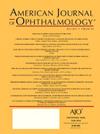National Trends in Central Retinal Artery Occlusion Presentations and Stroke Workup in United States Emergency Department
IF 4.1
1区 医学
Q1 OPHTHALMOLOGY
引用次数: 0
Abstract
Purpose
To investigate trends in acute central retinal artery occlusion (CRAO) diagnostic assessments and sociodemographic characteristics of patients in the United States (US) emergency department (ED).
Design
Retrospective trend study.
Subjects
Adult patients with CRAO presenting to ED from 2016 through 2021.
Methods
The National Emergency Department Sample was queried with International Classification of Diseases, Tenth Revision (ICD-10) codes with a primary diagnosis of CRAO. Stroke workup modalities assessed included brain imaging (CT/computed tomography angiography and magnetic resonance imaging/magnetic resonance angiography), carotid imaging (US, computed tomography angiography, magnetic resonance angiography), cardiac diagnostics (echocardiogram/electrocardiogram), and laboratory workup (erythrocyte sedimentation rate/C-reactive protein).
Main Outcome Measure
Proportion of studied participants receiving stroke workup modalities.
Results
A total of 3736 patients were identified with mean age of 69 [13.72] years, majority were male (53.02%), and predominantly insured by Medicare (62.77%). Comorbidities included hypertension (75.45%), hyperlipidemia (44.67%), coronary artery disease (20.26%), diabetes (27.38%), and obesity (11%). CRAO incidence significantly increased over the 5-year period from 1698 to 3526 (P = .024). Utilization rates of all workup modalities including brain imaging, carotid imaging, heart, and laboratory tests showed a linear increase from 2016 through 2021. The proportion of patients receiving no stroke workup decreased from 66.75% to 57.87% (P = .259).
Conclusions
The US has increased the screening and stroke workup of CRAO in the ED over time, yet greater than 50% of patients continue to not receive any type of stroke workup imaging. Greater awareness of these trends and current guidelines could result in improved screening and patient outcomes.
美国急诊科视网膜中央动脉闭塞表现和卒中检查的全国趋势。
目的:调查美国急诊科(ED)患者急性视网膜中央动脉闭塞(CRAO)诊断评估和社会人口学特征的趋势。设计:回顾性趋势研究。研究对象:2016年至2021年出现急诊的CRAO成年患者。方法:采用《国际疾病分类第十版》(ICD-10)代码对初步诊断为CRAO的国家急诊科样本(NEDS)进行查询。评估的卒中随访方式包括脑成像(CT/CTA和MRI/MRA)、颈动脉成像(US、CTA、MRA)、心脏诊断(超声心动图/ECG)和实验室检查(ESR/CRP)。主要结果测量:接受卒中锻炼方式的研究参与者的比例。结果:共发现3736例患者,平均年龄69[13.72]岁,男性居多(53.02%),参保人数占62.77%。合并症包括高血压(75.45%)、高脂血症(44.67%)、冠状动脉疾病(20.26%)、糖尿病(27.38%)和肥胖(11%)。CRAO的发病率在5年期间从1698例增加到3526例(p=0.024)。从2016年到2021年,包括脑成像、颈动脉成像、心脏和实验室检查在内的所有检查方式的使用率均呈线性增长。未接受卒中检查的患者比例从66.75%降至57.87% (p=0.259)。结论:随着时间的推移,美国在急诊科增加了cro的筛查和卒中检查,但仍有超过50%的患者未接受任何类型的卒中检查成像。提高对这些趋势和现行指南的认识可以改善筛查和患者预后。
本文章由计算机程序翻译,如有差异,请以英文原文为准。
求助全文
约1分钟内获得全文
求助全文
来源期刊
CiteScore
9.20
自引率
7.10%
发文量
406
审稿时长
36 days
期刊介绍:
The American Journal of Ophthalmology is a peer-reviewed, scientific publication that welcomes the submission of original, previously unpublished manuscripts directed to ophthalmologists and visual science specialists describing clinical investigations, clinical observations, and clinically relevant laboratory investigations. Published monthly since 1884, the full text of the American Journal of Ophthalmology and supplementary material are also presented online at www.AJO.com and on ScienceDirect.
The American Journal of Ophthalmology publishes Full-Length Articles, Perspectives, Editorials, Correspondences, Books Reports and Announcements. Brief Reports and Case Reports are no longer published. We recommend submitting Brief Reports and Case Reports to our companion publication, the American Journal of Ophthalmology Case Reports.
Manuscripts are accepted with the understanding that they have not been and will not be published elsewhere substantially in any format, and that there are no ethical problems with the content or data collection. Authors may be requested to produce the data upon which the manuscript is based and to answer expeditiously any questions about the manuscript or its authors.

 求助内容:
求助内容: 应助结果提醒方式:
应助结果提醒方式:


